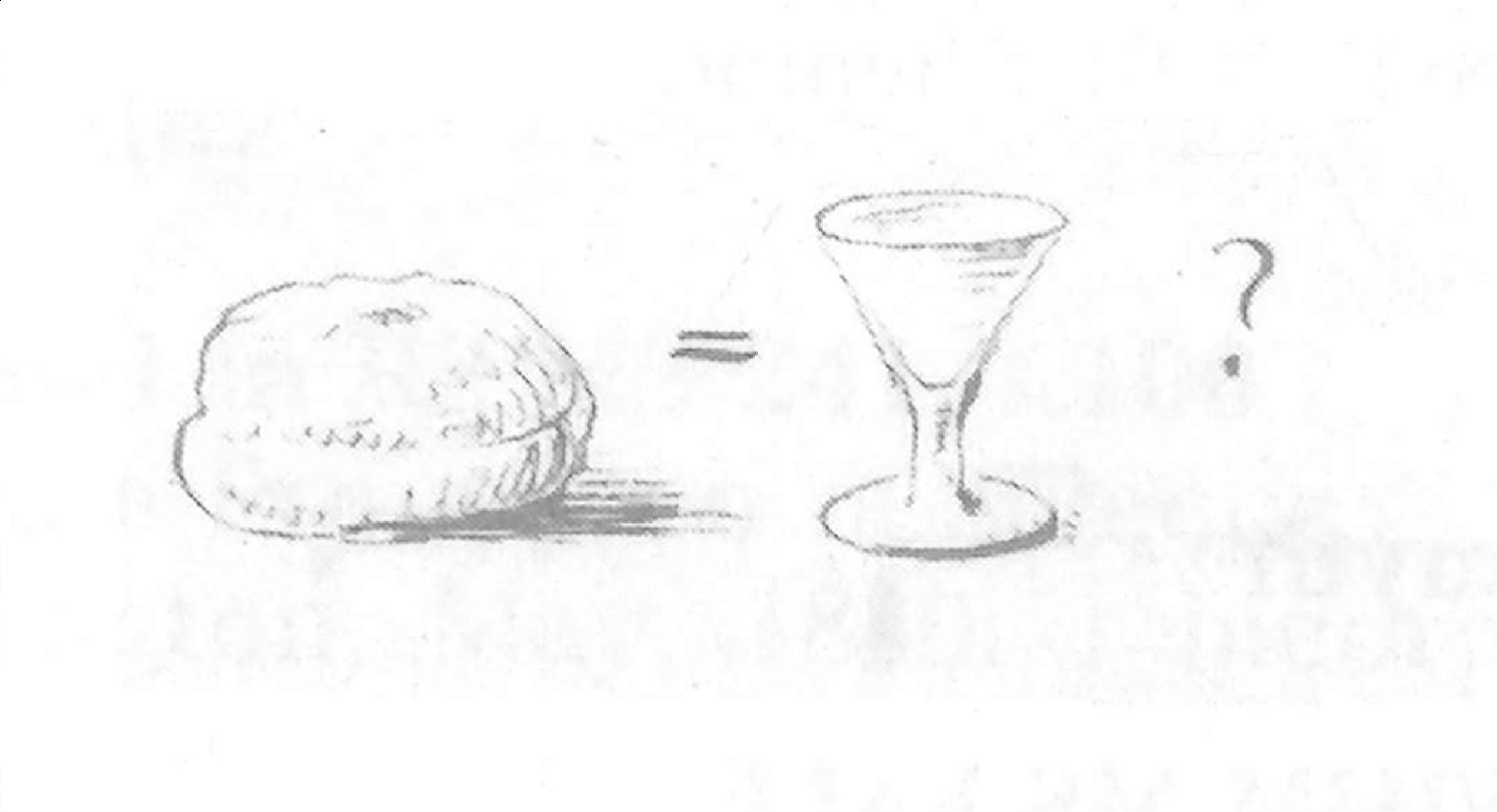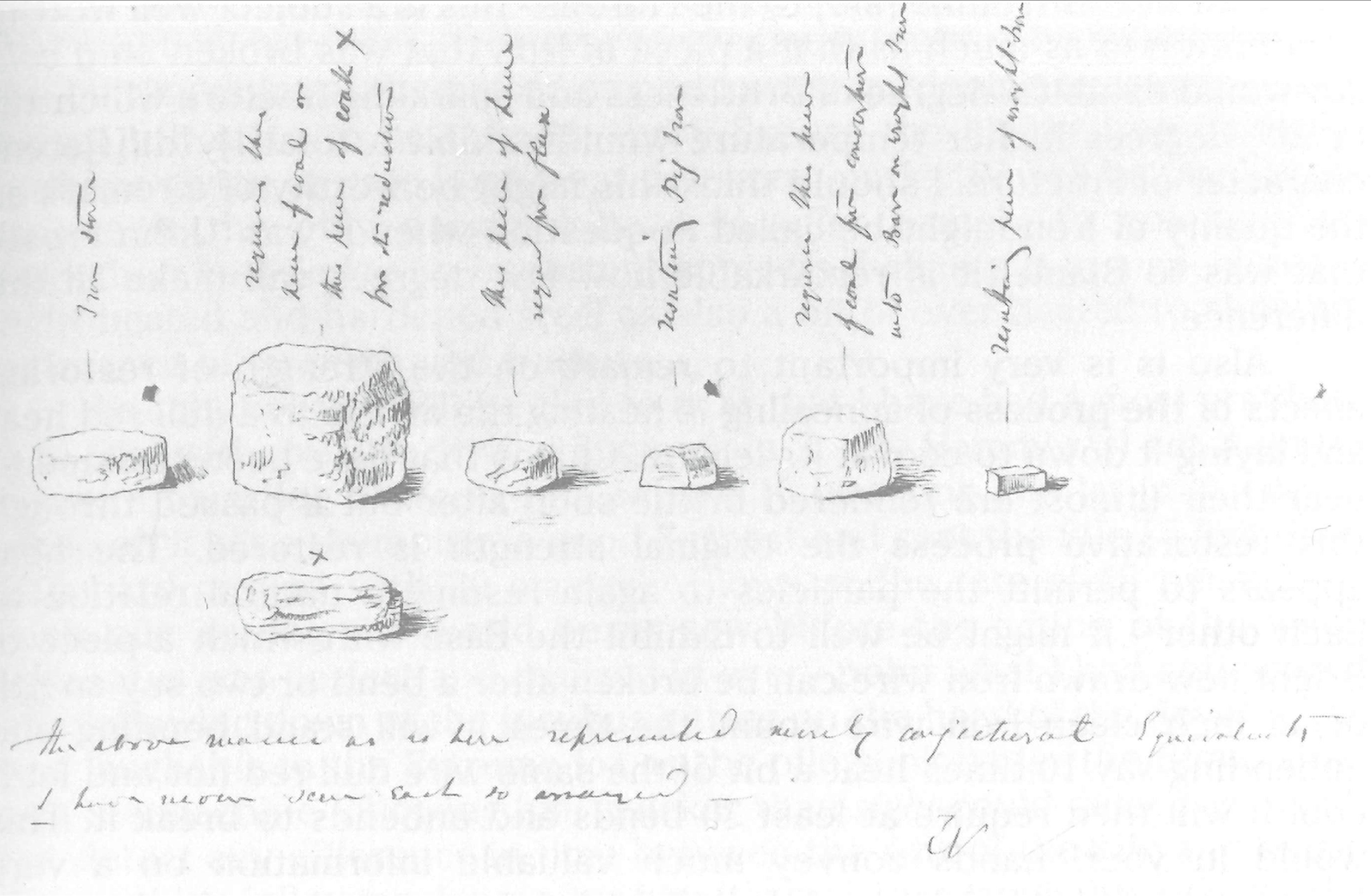James Nasmyth to Faraday 7 May 1845
Bridgewater Foundry, Patricroft, near Manchester, May 7 1845.
My Dear Sir
I am duly favoured with your valued note of the 5th1. I had not forgotten the promise I made and which I have had so much pleasure in endeavouring to perform[.] I hope some of the specimens have arrived already as I have had advice of the set of Equivalents leaving the Elsecar Iron work2, Yorkshire a few days since and hope they have come to hand and are in satisfactory form[.] I only hope they wont too much cumber your lecture table but I trust the clear and definite Idea as to relative quantities of the materials employed on and in the production of a certain mass of wrought Iron will be acceptable to your audience - its a novel mode of Illustrating the subject but I think it is one that has common sense (that of sight) to recommend it3[.]

I wish I could see a museum of manufactures so arranged it would very materially help to convey sound and lasting impressions a museum of Equivalents? - I should even like to see how large a piece of Bread a glass of Gin represents perhaps something like this

I hope you have by this time received more monster shavings from my excellent friend Joseph Miller4 Esquire of Blackwall who I engaged to let you have some specimens which I thought would illustrate the triumph of mechanic art over obdurate material - I hope they have come to hand and are satisfactory[.]
I had also written to my friend Edward Bury5 superintendent of locomotion Engines on the London & Birmingham for a specimen or two of Broken axle6 - and hope he also has complied with my request in a satisfactory manner - failing which I might name that there is a collection of most "malignant cases" under the charge of Sir H De La Beche at Craig's court which might in the absence of suitable specimens from E. Bury supply you with what is desired on that subject, a most interesting and important one it is.
I have just received the inclosed from Mr Bury and I fear from its contents he has nothing satisfactory to send on the subject of Railway axles, so I should advise application to Sir H De La Beche. I shall take care to have a small cast sent off in time with some specimens of the influence of Cold Swaging or cold hammering in destroying the fibrous fracture of wrought Iron and also of the Effect of annealing at a dull red heat in restoring the strength and that to in a highly improved degree cold swaging does no harm but quite the contrary provided it be followed up by annealing at a dull red heat[.]
Also the little case will contain a specimen of the influence of a few degrees of heat in changing the appearance of the Fracture of wrought Iron from the christaline [sic] to the Fibrous - this is a subject well worthy of attention in as much as that a piece of Iron that was broken on a cold day would exhibit a degree of Brittleness and sparkling fracture which 10˚ or 20˚ degrees higher temperature would exhibit a total[l]y dif[f]erent character of Fracture. I should think this might be worthy of a remark as the quality of Iron might be called in question when it was "John Frost" that was to Blame, it is remarkable how few degrees will make all the difference.
Also is is very important to remark on the strength of restoring effects of the process of annealing ie heating the article to a dull red heat and laying it down to cool at its leisure. Chains that have been strained to near their utmost are rendered brittle soon after but if passed through this restorative process the original strength is restored. The heat appears to permitt the particles to again resume a natural relation to Each other - it might be well to Exhibit the Ease with which a piece of Bright new drawn Iron wire can be broken after a bend or two say an 1/16th of an inch clean Iron wire count the times it will stand bending and unbending say 10 times heat a bit of the same wire dull red hot and let it cool it will then require at least 30 bends and unbends to break it. This would in your! hands convey much valuable information on a very important subject in a few words it directly bears on a class of subjects of the highest practical importance. The Bright wire represents the metal with its particles in a constrained unnatural state. The annealing sets them all comfortable again and they will pay back the kindness ten fold in increased strength and toughness - but perhaps this is just what you were going to do so pray excuse the liberty I am taking in making such suggestions. I am just about to run over to Bolton to try and get a specimen of a Bit of clipt Iron Bar that will perhaps show the power we have in the serious line of tools. I do hope Miller's big shavings have arrived and are satisfactory.
Should you toutch [sic] on the process of Hardening and tempering of steel it might be as well to say a word on the real distinction between the two processes. The one the primary the other the secondary Hardening by plunging into cold water or mercury - which as Every one almost knows hardens the steel. Then comes the modification of suit hardness to suit various purposes when we can spare a bit of hardness to get toughness in exchange - but in the case of those tools which Engineers use and which are performing such wonders for the cause of civilization i.e. turning and Planing tools &c. for our big machines &c all such are simply hardened by heating to the lowest Red heat at which on plunging into cold water they will just harden[.] This is the grand point to attain and it is by this simple process alone and no after tempering that the tools in question stand such vast work and peel off such shavings, it is the most important point to hit the right heat at which they will just harden[.] Every degree above this is to the damage of the steel as to strength as well as real practical hardness - we never temper such tools[.] The simple dip in of the cutting point at the before named lowest-hardening heat is the grand secret if it is so to be termed - pray Excuse the liberty I am taking in perhaps giving in rude form what you knew perfectly well before but the motive is the only excuse I have to offer namely to communicate workshop knowledge on important subjects. I shall put in a specimen of right heated and hardened steel as also a bit of over heated to show the difference of strength and fracture[.]
I doubt not you will be glad to hear that I have had a most gratifying first trial with my pile driving Engine a la Steam Hammer7. I set it on the top of a blunt log of wood 14in square 16 feet long and let in the steam when off it set a thumping in good Earnest and sent the Pile 15 feet down into hard ground with 20 masterly Blows at the rate of 65 per minute! such pile driving the world never saw before the action of the whole apparatus was perfect and realized in every point what I had anticipated. The following down of the incubus sitting on the head of the devoted pile was laughable in the Extreme for as the pile sunk under the Blows there was the machine following him quicker than sight could detect as I could not detect any difference in time between the sink of the pile and that of the machine following down after him it's real[l]y a laughable scheme this but a truly important one. it is now shipping for Devonport Dock-yard along with a second8. They will have lots of work to do there. Pray Excuse this length[y] infliction on your patience
from yours Most faithfully | James Nasmyth
Michael Faraday Esq
Bibliography
NASMYTH, James (1883): An Autobiography, London.
Please cite as “Faraday1725,” in Ɛpsilon: The Michael Faraday Collection accessed on 30 April 2024, https://epsilon.ac.uk/view/faraday/letters/Faraday1725